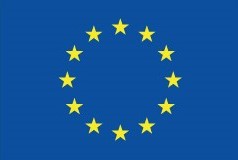- Home
- EuroDairy – Resource efficiency factsheets
EuroDairy – Resource efficiency factsheets
EuroDairy factsheets on the topic of resource efficiency.
Combining automatic milking and grazing successfully
Grazing and robotic milking are often considered incompatible. However, results from the experimental farm of Derval (located in the northwest of France) prove that it can be a successful match.
When climate conditions are good, the ration can even go to all-grazing, reducing production costs. To achieve this, good management is crucial; cow traffic must be carefully observed, as well as grass growth.
Two critical success factors need to be considered:
- The distance of the robot to the pasture
- The number of cows that the robot has to milk
Milk carbon footprint: The French case
The French Livestock Institute (Institut de l’Elevage), in association with three partners, has launched the Life Carbon Dairy project.
Its main goal is to promote an approach to reduce the milk carbon footprint at farm level by 20% over 10 years.
Improved feed efficiency through compact TMR
Practical experience shows that cows on a total/partial mixed ration (TMR/PMR) too often sort their feed. Feed sorting can impact herd health, performance and efficiency.
It increases standing time at the feed bunk, and high-ranking cows often get more of the concentrates, leaving straw and other less palatable components to the low-ranking cows.
Compact TMR addresses this problem and ensures that all cows in a feeding group have unlimited access to a feed mix that cannot be sorted.
All cows eat the planned ration in a stress-free environment in a minimum amount of time, resulting in higher precision in feeding and more time for resting.
Forage as a protein source for dairy cows
Forage is an important locally produced protein source for dairy cows, but the utilisation of forage protein in ruminants remains a challenging topic.
A large part of the protein in ensiled forage is available in the form of free amino acids, ammonia and other simple nitrogen compounds as well as other rumen-degradable protein (RDP).
To capture the free amino acids and ammonia for microbial protein synthesis, instant energy sources, such as sugars, are needed, and for the other RDP, digestible fibre is also needed.
Optimal use of mineral resources
More efficient use of resources (e.g. land, labour, feed, fertiliser, fossil fuel and water) is one of the biggest challenges to face dairy farming in Europe, directly affecting competitiveness, social acceptability, environmental sustainability and biodiversity/habitats.
By improving feed efficiency in dairy cattle herds, dairy farmers have the opportunity to address two main issues which they encounter:
- Feed costs have a direct impact on the profitability of the dairy farm, so increasing feed efficiency contributes to a more profitable farm
- An improved feed efficiency can help to reduce the negative impacts of dairy production on the environment, by lowering greenhouse gas (GHG) emissions and nutrient losses to the environment associated with cattle production
This also addresses increasing societal concerns regarding this issue, thereby contributing to the improved social acceptability of the sector.
Reducing nutrient losses: Use of additives in silage production
The use of the right type of additive for crops being ensiled decreases dry-matter losses during storage and prevents heating of the silage during feed-out, thereby decreasing total DM losses from the silage.
Estimating slurry nutrient content: Quick on-site methods
To optimise the use of slurry, it is essential to know its nutrient content. This enables sound decisions to be made on fertilisation rates, customised to the individual farm situation.
Slurry nutrient content is highly variable, not only across farms but also within a single farm, for example, due to diet or the addition of rainwater, which can vary seasonally.
There are financial and environmental benefits to be gained by determining the nutrient content of the slurry more accurately, quickly and easily before application.
Several approaches are available for rapid analysis on farm. These measurements are facilitated by the use of calculations, specific to regional conditions and/or to the specific type of equipment used.
Cut and carry: An alternative way to feed home-grown forages
Cut and carry, sometimes referred to as zero grazing, is a feeding system where fresh grass is cut daily and fed to housed cows throughout the grazing season.
Over recent years, many dairy farmers have implemented a cut-and-carry system to increase the proportion of fresh grass included in the diet and as a management tool for fragmented grazing land, expanding herd sizes and robotic milking systems.
Reducing ammonia emissions: Managing trade-offs
The challenge of reducing ammonia emissions from dairy farming involves several trade-offs which have to be successfully resolved, e.g. reducing protein in the ration vs optimising health and productivity, reducing losses during manure application vs the additional cost of low emission spreading techniques, reducing emissions from housing or manure storage vs the cost and practicality of adjusting farm infrastructure.
Fortunately, science and practice can be combined to address these issues, with measurable improvements evident on implementing dairy farms.
Managing organic nutrients
Livestock production leads to valuable outputs of organic resources (manure, slurry, wastewater, etc.) that could be used to supply nutrients and avoid soil organic matter depletion in agricultural soils.
Nevertheless, it is not always possible to link the excess of organic matter in animal waste to the demand for soil nutrients that exist in agricultural soils.
Reduced pesticide use in fodder crops
Pesticide use must be reduced as much as possible to safeguard the environment and public health.
Two techniques for reduced pesticide use in maize are used on the Derval farm, located in the northwest of France. Both methods focus on weeding maize on the row, the first one pre-emergence and the second post-emergence, by hoeing.
Suitable equipment is required for these techniques, but the results indicate that herbicide use can be reduced by up to 70%.
This project has received funding from the European Union`s Horizon 2020 research and innovation programme under grant agreement No 696364.
 Government logo
Government logo

